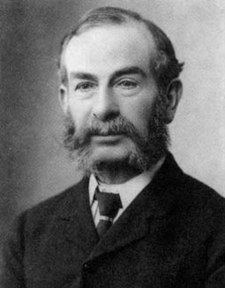In the 1700s, calculus quickly became the most powerful tool for those practicing “mixed mathematics”, a diverse field of analysis dealing with the motions created by known forces. Throughout that century, it was used by a relatively narrow class of elite mathematicians, primarily to predict celestial motions, but also to analyze problems in ordinary mechanics and hydrodynamics. Increasingly, its development was centered on France, but in the 1800s it was adopted by large new groups of British and German physicists, who used it to establish the new fields of thermodynamics and electromagnetism.
 The Cambridge Senate House today
The Cambridge Senate House today
The expansion in the population of calculus-users was made possible by new methods of mathematical training. At Cambridge University, the center of new physics developments in England, the mathematical “tripos” examination, taken in the Cambridge Senate House at the end of students’ course of studies, shifted from an oral examination to a written one in the late 1700s, and began adopting Continental mathematics in the early 1800s. Exam results were listed in an “order of merit” with the “wranglers” at the top (the “senior wrangler” being the highest rank), down through senior and junior “optimes” to the unranked “hoi polloi”. The competitiveness of these exams, and the sophistication of response that could be recorded on paper, allowed the exams to become unprecedentedly difficult over the course of the 19th century, often including cutting edge results.
To cope with the difficulty of these exams, students preparing for the tripos had to undertake continual study, not only to absorb the mathematics, but to train their abilities to use it appropriately. College lectures proved sorely inadequate for the task. Students instead turned to private tutors, or “coaches”.
The term coach came from the speedy horse-drawn coaches that could, in the decade or so prior to the widespread use of the train, transport wealthy students between London and Cambridge (about 60 miles) in just four or five hours. Cambridge mathematical coaches, likewise, provided students with the best route to a good examination performance. Typically meeting in small groups in the coach’s private quarters or in a lecture hall (if coaches were also college lecturers), students would be taught useful methods and typical applications to different kinds of problems, including cutting-edge shortcuts that represented significant contributions to the mathematical literature when published. Of course, students were expected to work diligently on prescribed exercises on their own, as well.
The university allowed students to use private tutors throughout their three-year exam preparation beginning in 1824. The first coach to make a lifelong occupation from private tutoring was William Hopkins, seventh wrangler in the 1827 examination, who (ineligible to take a position at Cambridge because he was married) also became the dominant Cambridge coach of his generation, training the bulk of senior and upper-level wranglers. Others were part-time coaches who were also fellows of one of Cambridge’s colleges. By the 1850s, Hopkins began to lose his dominance to a new generation, including Percival Frost (senior wrangler 1839), Stephen Parkinson (senior wrangler 1845, beating out William Thomson), Isaac Todhunter (senior wrangler 1848), William Besant (senior wrangler 1850), William Steele (second wrangler 1852), and Edward Routh (senior wrangler 1854, beating out James Clerk Maxwell). Todhunter, Steele, and Routh were themselves coached by Hopkins.
 Edward Routh (1831-1907)
Edward Routh (1831-1907)
Edward Routh became far and away the dominant coach at Cambridge between about 1860 and the mid-1880s. Of 990 wranglers graduating between 1862 and 1888, 48% were coached by Routh, including 26 senior wranglers; 80% of the top three wranglers between 1865 and 1888 were his (Warwick, p. 233). Teaching more students more difficult material than ever before, Routh devised a regimented mathematical pedagogy with specialized material for students at various stages of their study and at various levels of ability. The very best students would be given specialized instruction.
Routh and his students worked from early morning hours until late at night pausing largely only for meals and vigorous exercise, which was considered necessary to the maintenance of mental faculties. Neither “teaching to the test” (as we would say now), nor providing a well-rounded liberal education, Routh and other coaches made their students live mixed mathematics, becoming masters of its tools and their proper application, which would allow them to perform well no matter what appeared on the test. Students were run ragged by their mathematical instruction, but most developed a lasting affection for their coaches. Coaches’ instruction established not only a lasting pedagogy of physics at Cambridge, it was the foundation of the culture of 19th and early 20th-century British physics theory.
The syllabi, problems, and pedagogical methods developed by Routh and other Cambridge coaches soon spread elsewhere as graduates of the tripos took up teaching positions outside of Cambridge. The coaching system itself fell apart early in the 20th century after the order of merit was discontinued in 1909 and university lecturers began to adopt many of the methods pioneered in the coaching system.
—
This post is largely a distillation of arguments and material in Andrew Warwick’s superb Masters of Theory: Cambridge and the Rise of Mathematical Physics (2003), which I have also listed as a candidate for a canonical source for the history of 19th-century physics. Some inconsistencies in the text regarding wrangler status have been corrected using the Wikipedia list of senior and second wranglers.